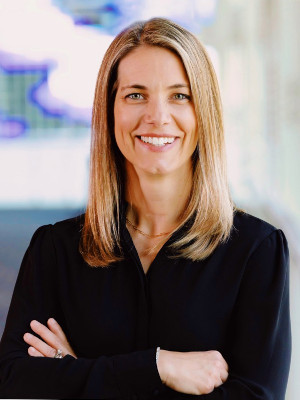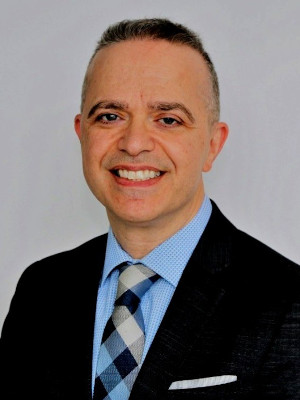Donating large sums of money is not new—we see the legacies of wealthy families in the hospitals, museums and charitable organizations that bear donors’ names.
What’s new in the business of philanthropy is the rise of a more strategic, impact-driven approach called venture philanthropy. Inspired by venture capital, this model blends funding with hands-on involvement, performance metrics and long-term goals.
It’s not just about writing a cheque, it’s about backing big ideas with the tools to make them sustainable. And at least one of Canada’s hospital foundations is using venture philanthropy to make a difference in the wider community.
What is venture philanthropy?
The term is attributed to John D. Rockefeller III. In 1969, he described the concept as “an adventurous approach to funding unpopular social causes.” The traditional definition, especially in the U.S., is an application of capital toward philanthropic projects, usually because investment and grants don’t support non-profit organizations or ESG-related industries.
What makes it different from regular VC investing or impact investing is that the primary interest is not profit.

According to Jean-Marc Mangin, president and CEO of Philanthropic Foundations Canada, “venture philanthropy, to me, blends social and financial returns. You’re looking for returns, but there’s a high appetite for risk and that acceptance of a rate of failure.”
In the case of the MUHC Foundation, the money goes toward a new Innovation Fund. What makes this investment venture philanthropy rather than regular charitable giving is that this fund not only helps move ideas forward out of the laboratory, but can yield to economic benefits to our society.
Marie-Hélène Laramée, president and CEO of the McGill University Health Centre (MUHC) Foundation, says that donors to the fund are advancing innovation at the hospital, especially as technology changes rapidly and many projects now include artificial intelligence.
Among them are “mechanical devices, wearables, all sorts of things in the healthcare market that have tremendous benefit for patients,” she says. “It’s positive for us to be able to work with outside partners of all sorts, to be able to bring benefit to our patients.”
The MUHC Foundation focuses on the biggest outcome, she says. “Who benefits the most from this is our patients, and if that link isn’t obvious and immediate, then we wouldn’t get involved. So we’re not just investing to invest in projects and products. We’re only doing it because it serves our patient population immediately.”
How is venture philanthropy different?
Unlike many charitable donations, in which the donor is hands-off but might be kept up-to-date on how the money is being used, venture philanthropy tends to be more hands-on, with investor oversight and engagement. Think Bill Gates’ foundation, in which he plays an active role.
At the MUHC Foundation, the causes are often personal to the donors, says Harris Poulis, its chief operating officer.
There’s a lot of excitement [for donors] about being in discussions with the researcher and the doctor themselves.
Harris Poulis, COO of MUHC Foundation
“In terms of our donors and why they are involved in some of these projects, a lot of times it’s very personal to them. Sometimes it’s a specific disease and illness that touches someone in the family or friends, and they see this as an opportunity to move the needle forward in terms of cutting edge research.”
Laramée says some donors designate a specific area of research. “The advantage of the innovation fund is that even if a donor gave $20 and was interested in support and innovation, they could do that,” she says. “But obviously at that point we wouldn’t have a donor agreement, and so their involvement would be less.”
The MUHC Foundation serves family foundations who want to give and be at the table, she adds. Researchers then present several projects to them.
“Then they’ll decide where they invest their money. In this situation maybe they’re not going to choose based on the science, but they may drive the decision based on their requirements, such as supporting things that have been approved by the Canadian Institutes of Health Research,” the federal government’s funding agency for health research.
Measurement of success
Once a donor has expressed interest in a research project, it will be brought to the MUHC Foundation, which defines the key performance indicators, says Laramée.
“So when we have a project like that, we bring it to our volunteer board, and we have a subcommittee of the board that’s called the innovation and commercialization committee,” she explains. “We don’t [automatically] commercialize it.”
What comes out of the research could be a commercializable device or product, and they will look at it through the lens of a venture business, she adds. They’ll then help the researcher organize the steps toward a go-to-market strategy.

The foundation also establishes milestones governing disbursement. “For example, say a project asked for three million dollars over three years,” Laramée says. The first million might be provided at the start of the project, but the second million would be handed over only when certain milestones are met.
“That’s why we call it venture philanthropy, because none of this is investment money. But the board itself is getting something back, because their innovation fund is building up over time,” she adds.
If a project has the potential for commercialization, it is transferred to another area of McGill that will help with this process.
Poulis says that the keys to the MUHC Foundation’s goals are transparency, public communication and understanding the process of medical research and the involvement of the government.
“Because we’re in healthcare, the donors at that level who are investing in those kinds of projects gain a certain proximity, so they get to sit with them and understand the doctors’ hurdles, and sometimes they could even invest more to help break some of those hurdles,” he says.
“There’s really a lot of excitement about being in discussions with the researcher and the doctor themselves.”
Get our new quarterly newsletter about philanthropy: Canadian Family Offices’ new newsletter brings you key insights, trends and expert perspectives on charitable giving, tailored to Canada’s wealth leaders and giving communities. Click here to subscribe now to stay ahead.
Please visit here to see information about our standards of journalistic excellence.

